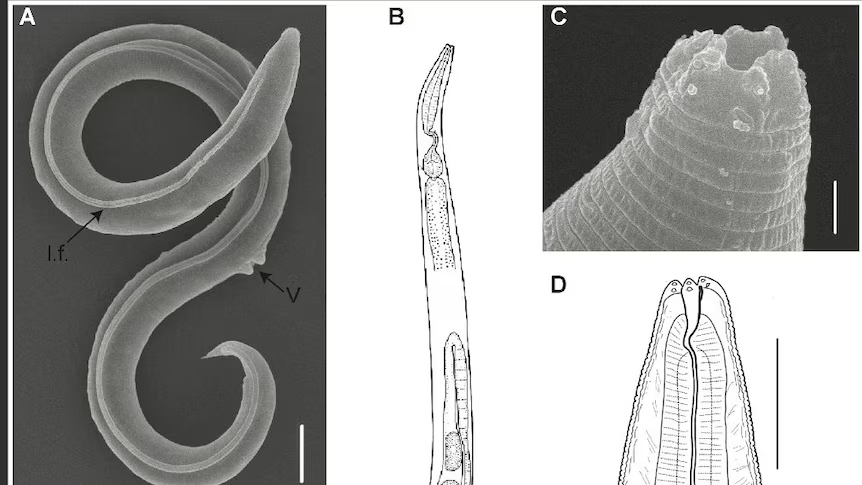Home / pet-and-animal / Dog Health Alert: Identifying Allergies, Flea Treatment, and Hip Dysplasia Concerns
Dog Health Alert: Identifying Allergies, Flea Treatment, and Hip Dysplasia Concerns
By: My India Times
3 minutes read 32Updated At: 2025-01-31

Dogs bring joy and companionship, but their health issues can sometimes be a concern for pet owners. Three common problems affecting dogs are allergies, flea infestations, and hip dysplasia. Understanding the symptoms and treatments for these conditions can help ensure your pet lives a happy and healthy life.
Recognizing Dog Allergy Symptoms
Dog allergies are more common than many pet owners realize. Allergies can be triggered by food, environmental factors, or even flea bites. Identifying the symptoms early can prevent discomfort and serious health issues.
Common signs of allergies in dogs include excessive itching, red or inflamed skin, constant licking of paws, ear infections, watery eyes, and sneezing. Some dogs also experience digestive issues such as vomiting or diarrhea if they have food allergies.
Environmental allergies, such as pollen, dust, or mold, often cause seasonal symptoms. If your dog shows signs of allergies, consulting a veterinarian is crucial for proper diagnosis. Treatment options may include antihistamines, medicated shampoos, dietary changes, or allergy shots. Regular grooming and keeping the home clean can also help minimize allergens that trigger reactions in sensitive dogs.
Flea Treatment and Prevention
Fleas are a common nuisance that can cause severe itching, skin infections, and even transmit diseases. Once a dog has fleas, they can quickly spread throughout the home, making treatment essential.
Signs of flea infestations include excessive scratching, biting at the skin, red bumps, hair loss, and flea dirt (tiny black specks resembling pepper) on the dog's coat. Some dogs also develop flea allergy dermatitis, where even a single flea bite causes intense itching and inflammation.
Effective flea treatment involves using vet-approved flea control products, such as spot-on treatments, oral medications, flea collars, and medicated shampoos. Additionally, deep cleaning the home, including vacuuming carpets, washing bedding, and treating furniture with flea sprays, helps eliminate fleas from the environment.
Prevention is key to keeping fleas away. Regularly treating pets with preventive flea medications, maintaining a clean home, and avoiding areas with heavy flea populations can help protect dogs from future infestations.
Understanding Hip Dysplasia in Dogs
Hip dysplasia is a genetic condition affecting a dog’s hip joints, leading to pain, stiffness, and mobility issues. Larger dog breeds, such as German Shepherds, Labrador Retrievers, and Great Danes, are more prone to this condition, but it can affect smaller breeds as well.
Symptoms of hip dysplasia include difficulty standing, reluctance to run or jump, a swaying gait, and visible discomfort when moving. As the condition progresses, dogs may develop arthritis, further worsening mobility.
Treatment depends on the severity of the condition. Mild cases can be managed with weight control, joint supplements, physical therapy, and pain-relief medications. Severe cases may require surgery, such as hip replacement or corrective procedures to improve joint function.
Preventing hip dysplasia in at-risk breeds involves responsible breeding, providing proper nutrition, and maintaining an ideal weight to reduce stress on the joints. Regular exercise and avoiding activities that put excessive strain on the hips can also help manage the condition.
Keeping Your Dog Healthy and Happy
Dog allergies, flea infestations, and hip dysplasia can significantly impact a pet’s quality of life. Early detection and proper treatment are key to managing these conditions effectively. Regular vet checkups, a balanced diet, and preventive care play a vital role in ensuring a long and healthy life for your furry companion.
Dogs bring joy and companionship, but their health issues can sometimes be a concern for pet owners. Three common problems affecting dogs are allergies, flea infestations, and hip dysplasia. Understanding the symptoms and treatments for these conditions can help ensure your pet lives a happy and healthy life.
Recognizing Dog Allergy Symptoms
Dog allergies are more common than many pet owners realize. Allergies can be triggered by food, environmental factors, or even flea bites. Identifying the symptoms early can prevent discomfort and serious health issues.
Common signs of allergies in dogs include excessive itching, red or inflamed skin, constant licking of paws, ear infections, watery eyes, and sneezing. Some dogs also experience digestive issues such as vomiting or diarrhea if they have food allergies.
Environmental allergies, such as pollen, dust, or mold, often cause seasonal symptoms. If your dog shows signs of allergies, consulting a veterinarian is crucial for proper diagnosis. Treatment options may include antihistamines, medicated shampoos, dietary changes, or allergy shots. Regular grooming and keeping the home clean can also help minimize allergens that trigger reactions in sensitive dogs.
Flea Treatment and Prevention
Fleas are a common nuisance that can cause severe itching, skin infections, and even transmit diseases. Once a dog has fleas, they can quickly spread throughout the home, making treatment essential.
Signs of flea infestations include excessive scratching, biting at the skin, red bumps, hair loss, and flea dirt (tiny black specks resembling pepper) on the dog's coat. Some dogs also develop flea allergy dermatitis, where even a single flea bite causes intense itching and inflammation.
Effective flea treatment involves using vet-approved flea control products, such as spot-on treatments, oral medications, flea collars, and medicated shampoos. Additionally, deep cleaning the home, including vacuuming carpets, washing bedding, and treating furniture with flea sprays, helps eliminate fleas from the environment.
Prevention is key to keeping fleas away. Regularly treating pets with preventive flea medications, maintaining a clean home, and avoiding areas with heavy flea populations can help protect dogs from future infestations.
Understanding Hip Dysplasia in Dogs
Hip dysplasia is a genetic condition affecting a dog’s hip joints, leading to pain, stiffness, and mobility issues. Larger dog breeds, such as German Shepherds, Labrador Retrievers, and Great Danes, are more prone to this condition, but it can affect smaller breeds as well.
Symptoms of hip dysplasia include difficulty standing, reluctance to run or jump, a swaying gait, and visible discomfort when moving. As the condition progresses, dogs may develop arthritis, further worsening mobility.
Treatment depends on the severity of the condition. Mild cases can be managed with weight control, joint supplements, physical therapy, and pain-relief medications. Severe cases may require surgery, such as hip replacement or corrective procedures to improve joint function.
Preventing hip dysplasia in at-risk breeds involves responsible breeding, providing proper nutrition, and maintaining an ideal weight to reduce stress on the joints. Regular exercise and avoiding activities that put excessive strain on the hips can also help manage the condition.
Keeping Your Dog Healthy and Happy
Dog allergies, flea infestations, and hip dysplasia can significantly impact a pet’s quality of life. Early detection and proper treatment are key to managing these conditions effectively. Regular vet checkups, a balanced diet, and preventive care play a vital role in ensuring a long and healthy life for your furry companion.
By: My India Times
Updated At: 2025-01-31
Tags: pet-and-animal News | My India Times News | Trending News | Travel News
Join our WhatsApp Channel

Similiar News

US Supreme Court Rejects 26/11 Accused Tahawwur Rana’s Plea to Block Extradition to India
2025-03-08

































































.jfif)









.jpg)































































































.png)
 (1).png)























